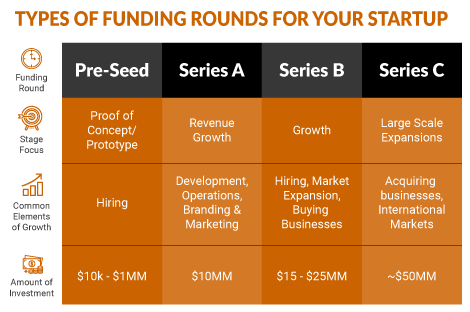All of the marketing trends with none of the industry jargon.
Sign up for our newsletter to stay updated on best practices, actionable tips, and virtual events so you can grow your business like a marketing pro.
"*" indicates required fields

As digital marketers, we’re immersed in an area where artificial intelligence (AI) is the driving force behind digital advertising innovation. With its astonishing pace of growth, AI continues to revolutionize how brands engage with consumers, predict trends, and optimize campaigns.
While some may worry about AI ‘taking over the world,’ ignoring its existence and sticking with the old routines will leave companies in the dust. The marketing industry continues to evolve its approaches to incorporating AI and SEO, especially since the tool has shown a remarkable ability to enhance efficiency and performance.
Imagine having a tireless assistant who can analyze mountains of data, identify keyword trends, and suggest content improvements — that’s the magic of AI in SEO. Here’s how this tech is transforming the SEO game.
Not quite. While AI excels at automation and data analysis, SEO will always rely heavily on creativity and human expertise for:
There’s no need to feel threatened by AI. It’s a tool to augment your SEO efforts, not replace your strategic thinking and creativity.
The short answer? Yes. But here’s the caveat: AI excels in creating factual, informative content. It can churn out well-structured articles jam-packed with relevant keywords — a great boon for marketing departments tasked with writing regular basic blog posts or product descriptions.
However (and it’s a big one!), AI sometimes confuses its facts (often called “hallucinations”, and it doesn’t always follow the brief. Think of it as a really smart kindergartener you’ve asked to do a job. You can send said kindergartener off to do her thing, knowing you’ll double-check when she finishes her chore. Or you can supervise more closely. Maybe you hold the bag of dog food open while she scoops out the kibble (and then show her where the dustpan and brush live after she’s spilled half the bag — and teach her how to use those cleaning tools).
AI’s like that, too. “Setting it loose” to do its thing unsupervised can lead to unintended (and negative) results. We’ve all seen the articles decrying the law firm that used AI to write briefs, citing the law cases it invented.
AI also simply can’t keep up with creative storytelling, humor, or in-depth analysis that resonates with readers. Relying solely on AI to generate content without human input and editing won’t consistently produce high-quality, SEO-friendly material.
Search engines like Google, Bing, and Yahoo constantly update their algorithms to detect and penalize low-quality or spammy content (including AI-generated content that lacks human oversight and editing). However, Google is simultaneously hard-launching (perhaps a little too soon) its own AI Overview in search results. Hopefully not too many folks put glue on their pizza or tried to eat rocks because AI suggested it.
Want a workaround? Use AI as an assistive tool, leveraging its research, ideation, and drafting capabilities. Employ it to create product descriptions or data-driven reports. Then, bring in human experts to review, edit, and refine the content to ensure quality, accuracy, and relevance.
Generative AI (GenAI) can create entirely new content, such as text, audio, or images, and it significantly impacts SEO in several ways. First, if you’re struggling with topics, GenAI can help you brainstorm new content ideas based on the information you feed it about your target audience and industry trends. GenAI also shines by:
A word to the wise: as GenAI tools become more user-friendly and ubiquitous, the risk of bad actors churning out low-quality, duplicate, or even malicious content increases. This probability will create a real headache for search engines trying to filter out the junk. We must stay vigilant and develop strategies to ensure our high-quality, human-edited content provides genuine value and cuts through the AI-generated clutter.
Which of the following is an example of AI use in digital advertising?
All of the above.
The correct answer is D! These strategies rely on AI technologies like machine learning (ML), natural language processing (NLP), and data analysis. AI can analyze mountains of user data, including demographics, interests, and online behavior, to inform hyper-targeted campaigns to reach the target audience most likely interested in a company’s product or service.
Bidding on ad placements is a complicated dance, but AI steps in as a strategic partner, analyzing campaign performance and user behavior in real time. Then, it automatically adjusts your bids for optimal performance and to maximize your ROI.
Want to personalize ad content based on a user’s browsing history, location, and time of day? AI can do that, too, to generate highly relevant, engaging ad experiences more likely to convert. Think of it as crafting ads that speak directly to each user’s needs (and wants), making them feel like you’re reading their mind (in a good way!).
AI improves chatbots’ ability to understand natural language, personalize recommendations with machine learning, maintain context in conversations, and analyze user sentiment. With AI, chatbots have more natural interactions, offer more appropriate suggestions, provide better customer service — and know when to escalate complex issues to a human agent.
AI is revolutionizing digital marketing. It won’t steal your job as long as you’re willing to work with it rather than ignore it. The technology excels at number-crunching, task automation, and insight generation. The human touch remains irreplaceable in crafting strategy, building brands, and understanding human complexities. AI is also going to automate enough tasks that you can expect to be asked to embrace ways to drive efficiency.
Yes, digital marketing will keep getting smarter, and ongoing advancements in AI, particularly in NLP and sentiment analysis, will propel ad strategies beyond what we’ve seen so far. Stay future-proof by learning about emerging technologies and evolving ethical practices in AI. Position yourself to thrive in the digital marketing landscape by embracing the AI revolution. Want to chat with our team about where to lean into AI and where to get our help? Just reach out.
"*" indicates required fields


Have you ever wondered how stories surrounding companies, leaders, or business topics get covered by the news media? No matter how it gets communicated to you – via TV, social media, or online news – it’s likely that whatever news you’re consuming was strategically placed there by a public relations professional.
PR can be a powerful tool in the communication toolbox to establish credibility, build trust with and engage your audience, create brand recognition, and position your company and its leadership as a thought leader. But it can be tough to know when news really is newsworthy. And even then, where do you start? Here you’ll learn how to tell if your news is newsworthy and how to create a strategic and research-backed approach to getting coverage for your company.
The question then becomes whether your news is valuable and compelling enough that a broader audience (i.e. people outside of your organization) would find it interesting. Here are a few things to keep in mind when evaluating if your news is indeed newsworthy:
When evaluating whether or not your company news is news and trying to generate PR for your small business, remember to think of it from the point of view of the audience or stakeholders you’re trying to inform. Of course YOU think your news is news, but will anyone else be interested?
This can easily get overlooked, especially when timely news or an announcement arises and you need to act quickly. Start by establishing clear objectives for your PR activities. What are you trying to do? Build brand awareness? Position your product in the market? Demonstrate credibility as a thought leader? Amplify an announcement? Secure interest from VCs? The clearer your goals, the easier you’ll be able to measure the results.
Once you identify the goals you want to accomplish through spreading the word about your company’s news, it’s time to shift focus to the audiences that will help you accomplish these goals. Who are you trying to reach? What spaces do they hang out in, and where do they go for information? What voices and sources do they trust
Take the time to think about how you identify your target audience. Is it geographically, by age or gender, or maybe by interest or industry? PR for small businesses often succeeds because of a strong focus on the exact right audiences for that piece of news. It’s critical to spend time getting to know and understanding the audience you’re targeting, as this will help you identify 1) how to reach them and 2) how to develop strong messages that will get them to act.
So once you know who that ideal audience is, how can you reach them? If your goal is thought leadership, consider bylined articles or speaking engagements. If your goal is to build brand awareness or position your product in the marketplace, pitch reporters to get earned media hits in publications or podcasts. If you have a corporate announcement you’re making, consider developing a press release and pitching it under embargo to prospective reporters.
After you’ve established the audience you want to reach, this is when you’ll create a targeted media list with outlets and reporters to contact. Research the outlets and reporters who speak to your target audience and have covered topics similar to yours in the past. Check out the list of tools below that can help do the research by identifying outlets, reporters, and contact information!
While earned media is the more traditional approach to PR, there are also other ways to obtain coverage. The PESO model (paid, earned, shared, and owned media) is a widely used strategy for thinking about segmenting your approach. This graphic by Spin Sucks, a professional development and training organization, explains the model well.
Now you’ve got your goals, audience, and strategy lined up. It’s time to outline the actual meat of the news you want to share. Think about the top three points you want to make, focusing on the critical pieces of information your audience should walk away with. Develop a key message document that lays them out with supporting, data-driven facts. You yourself what the research is telling you. What is your customer’s problem and how are you solving it?
After you know the most important points of your story, develop a pitch note that you can use and customize in your media outreach. The note (which you’ll send via email) should be brief and highlight the most interesting and valuable information. It’s important to customize each pitch note to the specific reporter you’re reaching out to.
How do you customize? Check out the recent articles they’ve written, their social media accounts, blogs, etc., and refer to something timely in your email. Think about a way that they could uniquely cover your story based on their style or what they typically cover. Don’t forget to offer the opportunity for the reporter to interview and speak with your spokesperson!
You’ve offered outlets the chance to speak to someone at your company, so what happens once they say yes? Hopefully, before you pitch, you have identified the relevant subject matter experts that will tell your story and share your messages. Get that spokesperson ready for potential interviews through a media prep session. Focus on best practices for delivering key messages and speaking with reporters. Remember to go through your key messages, and don’t hesitate to request that the outlet send the questions over ahead of time if there will be an interview involved.
Congratulations! You’ve laid all of the groundwork to execute effective PR for small businesses. Now it’s time to execute, and in order to do that, you’ll need some key supporting materials:
Once you begin pitching, how do you know your strategy is effective? In order to measure the success of your PR campaign, you have to identify some metrics and figure out how to score them. The first step is to establish KPIs (key performance indicators). These can include coverage, reach, sentiment, and social media engagement, to name a few. PR efforts are well-known for being tricky to quantify and measure, but setting goals up front and what will be used to measure them will help
1.To research outlets and reporters, build media lists, monitor coverage, try
2. For media monitoring services, test out:
3. To connect reporters with subject matter experts and sources, sign up for HARO.
PR, and more specifically media relations, is a critical part of any business’s communication and marketing strategy. And while the thought of pitching the media might seem daunting, the above tips can help guide the process. Just remember, it’s important to evaluate your news to ensure it’s of interest to the people you’re trying to reach!
Having a coordinated marketing plan is critical as a foundation you can use to build on with a PR strategy. For help creating and executing your 2021 marketing strategy, download our workbook
Rachel Gormley is a seasoned project manager with experience in strategic communication, public relations and event planning. An effective communicator armed with strong organizational skills, she can see a project through successfully from inception to completion, managing the fine details and ensuring seamless collaboration across workstreams. Rachel works hard to build and maintain strong client relationships. She takes pride in immersing herself in her clients to understand their needs and to make the recommendations that are best for their business.
Rachel graduated from Drexel University with a Bachelor’s degree in Communication and a Minor in Marketing.
&Marketing provides the robust outsourced marketing department growing companies need without the high overhead costs of big agencies or full-time employees. Our variable model empowers businesses to reach their growth goals through access to the guidance and expertise of senior level strategists and a flexible execution team.


As we learned in 2020, what worked before isn’t always going to be what continues to drive results. Modern marketing was flipped on its head when COVID-19 swept the world last year. As the months have gone on, we have learned to pivot where we need to, lean in where we can, and identify what strategies and tactics are still working, along with what needs a fresh approach. So now that a brand new year is here, what should you keep doing and what should you change?
We can’t predict the future, but we can use data, research, and lots of experience with our clients to tell you what marketing strategies to try in 2021.
Many businesses don’t take the time to understand their target audience’s true needs, and how their solution uniquely solves the problem their customers have. Competition is stiff, and digital messaging is flooding every channel. Break out of the echo chamber and get your audience to listen to you by narrowing your messaging to focus on exactly how you’re different. But be careful not to make it all about you. That uniqueness should be highlighted in a way that puts your customer in the spotlight, not your brand.
Some of you might be surprised to see this subject on a list of marketing strategies to try in 2021, but we assure you that email is not dead. Lots of businesses spent way too much of their time focusing on social media followers and not nearly enough on the people who have already said they want to receive content straight into their inbox.
Social media is great for generating brand awareness and connecting with people, but you will never own it. Mark Zuckerberg owns Facebook and can change the algorithm with a snap of his fingers, plummeting your organic reach. But email? That you own, and you can guarantee when you hit that send button, your message will go straight to a group of people who want to hear from you.
Content marketing is powerful when you do it right, and most growing businesses don’t. Without research, data, a concrete plan, solid copywriting, and a way to get your message to the right people, you’re just shouting into the abyss. Focus your efforts in the right places and you can establish yourself as a thought leader, build trust, and attract an audience who is ready to buy from you.
Search engine optimization (SEO) may seem intimidating, but it is worth the effort to build into your content strategy. There are many, many techniques to improve your SEO, and they can be pretty technical (we try to simplify it some here). However, the main thing to keep in mind is that you should be creating content for real humans with consideration for search engines, not the other way around.
Google is leaning harder than ever into highlighting local businesses when people are searching for something online. You need to claim your company listing on Google My Business and spend some time updating your profile, requesting, and responding to reviews. Your online brand reputation is critical and will be even more so in a post-COVID world. Plus, customer reviews can actually impact your local SEO, because Google likes when you leverage their platform.
Yes, we did just tell you to pay more attention to your email list than to social media, but that doesn’t mean you shouldn’t have a strong social plan in place when nailing down your marketing strategies for 2021. The key here is to work smarter, not harder. Embed your social media strategy into your overall content strategy. Repurpose blogs and email content by pulling out quotes, breaking down the content, and turning your articles into video or graphic series. In 2021 your social media content is going to work even harder for you because Google is starting to index social content —so get to work on those SEO keywords when writing both website blogs and posting on LinkedIn.
A fresh marketing strategy can re-energize your business for a new year. With a little bit of work, you can reach new audiences, draw in more customers, and grow your company. These 5 marketing strategies to try in 2021 should be the foundation of your plan, but foundation alone isn’t enough — you have to consistently execute. Our Marketing Planning Like a Pro workbook will help you do just that.
Need a more comprehensive marketing course to help you get a more complete grasp on your 2021 marketing strategy? Enroll in &Marketing U to get all of the tools, education, and accountability you need to grow your business this year.
&Marketing provides the robust outsourced marketing department growing companies need without the high overhead costs of big agencies or full-time employees. Our variable model empowers businesses to reach their growth goals through access to the guidance and expertise of senior level strategists and a flexible execution team.


Start-ups seeking new investors, regardless of the level of investment, need to better understand what drives individual investors or venture capital firms.
Around 65% of venture capital backed businesses fail to get a positive return on capital (ROIC) for investors. Because of this risk, investors have to be selective. Most investors look for six specific things when considering an investment in a startup business.

Investors look for a product or service with a compelling reason for customers to change current habits, or see something that is truly unique. Meaningful patents or trade secrets are also highly desirable for investors. Either way, the product or service should have strong differentiators. The functionality provided by a unique and innovative product should be readily apparent, making the sale process easier. Minimal barriers should stand in the way of the buying process, making it easy for customers to convert.
A differentiated business model is a major plus. As an example, in recent years, leveraging the internet has provided a way to reach consumers not easily accessible before – some notable examples are:
Investors will rarely invest in an existing and successful “me too” product where there will likely be a fight for market share. Just a “good idea” is not sufficient either. Most investors get involved with only a small fraction of ideas they screen, so it’s essential to stand out. The leading reason that start-ups fail at 42% is that there was “no market need.”
Successful startups are constantly seeking to satisfy their customers…. Design your products with the customer in mind. Remarkable startups listen and respond to their customers’ evolving needs and expectations.
Investors seek viable businesses that have traction in a well-defined core market, or at least a strong beachhead. They are looking for loyal customers, a low customer churn, and a high rate of repeat purchase. These can be good indicators of a viable product or service. According to Entrepreneur magazine, a common factor among successful startups is that they are constantly seeking to satisfy their customers and the whole organization is aligned to this goal. So, the product or service needs to be designed with the customer’s satisfaction in mind.
Further, it is essential that investors see proof that there is a large enough potential market for the product or service. Very niche products will not meet most VC company screens unless the market has a clear and significant gap. Remember that given the inherent risks and the low success rates, investors are unlikely to take a huge risk and will only focus on opportunities with a high return – a goal of a 10x return is not uncommon.
The team, with a strong leader, is another top factor for investors and is a leading indicator that a business can succeed. The bottom line is that investors invest in businesses and the team.
Investors are looking for teams that are passionate and knowledgeable about their product, service and industry. They will be asking themselves the following types of questions of the leadership team and the CEO or Founder:
23% of start-ups fail because they did not have the right team in place so as a startup, the people you surround yourself with are critical.
Developing a reasonably detailed business plan, at a minimum of three years, is an essential part of what investors evaluate. This plan should include:
Investors, particularly venture capitalists (VCs), are looking for companies that fit their investment philosophy and focus on areas where they have expertise. This means they’re looking for businesses where they can add strategic value. This benefits the companies they back as investors since they can concentrate their mentorship and advice to industries where they have deep experience. Many investor groups build up their know-how and expertise in certain market verticals by engaging people with senior level experience in those verticals.
A final key element of the investment is the terms. Startups need to clearly communicate the following:
Many startups fail in at least one of these areas, or don’t present their investment terms clearly.
Based on decades of experience meeting entrepreneurs and reviewing investor presentations, these six areas continue to be what startups need most. In almost every initial meeting, a startup fails to meet at least one of these criteria, and almost immediately disqualify themselves. Entrepreneurs seeking funds should remember one key factor summarized well by Paul Graham, Founder of Y Combinator: “Investors are pinched between two fears: fear of investing in startups that fizzle, and fear of missing out on startups that take off.”
If you are in the process of raising capital or seeking an exit in the future, fill out the form below and one of us will be happy to assist you through a complimentary consultation
Additionally, if your startup is in need of a freshly enhanced website before you begin seeking investors, download our go live checklist to find out exactly what you need to put in place.
Rahul Kapur has 40+ years of successful business experience spanning a variety of areas. As a business consultant, he provides companies of all sizes with his expertise in strategy development, M&A, new products & innovation, and data analysis and modeling. His experience includes Unilever, Dow Chemical and Aearo Technologies (now 3M). He is Managing Director of Icon Investment Partners, Chairman of Guilford Group, Managing Member of Ark Capital Investments, LLC, and Senior Advisor for &Marketing, Crossroad Transactions, and Quest Safety Products, as well as on the boards of several start-ups.
Jeff is the founder of Crossroad Transactions. He has over thirty years of experience in a variety of executive and entrepreneurial leadership positions, plus over 15 years of dedicated experience as in M&A. He has been Ernst & Young’s “Entrepreneur of the Year” award winner for the Midwest Region and Founder of Inc. Magazine “500 Fastest Growing Private Company”.
Jeff earned a BS in Marketing from the Kelly School of Business at Indiana University and he is a graduate of the Kauffman Foundation’s FastTrac Entrepreneur Program. He is a lifetime member of the Institute of American Entrepreneurs..
Rajat “Raj” Kapur is the founder and Managing Director of &Marketing. He strives to provide growing businesses of all sizes unparalleled marketing strategy and execution services. Raj brings two decades of professional experience in marketing, sales, and strategy development experience spanning B2B and B2C Fortune 50, mid-sized, and startups.
About &Marketing
&Marketing provides the robust outsourced marketing department growing companies need without the high overhead costs of big agencies or full-time employees. Our variable model empowers businesses to reach their growth goals through access to the guidance and expertise of senior level strategists and a flexible execution team.


With the end of the year quickly approaching, it’s time to start planning for 2021. &Marketing U’s team of expert coaches presented a webinar last week, where they shared valuable tips about developing and implementing a marketing program in 2021, specifically for “solo marketer” businesses.
During the webinar, the talked about
Couldn’t make the live webinar or want to watch it again? No problem! Watch the recording to learn how to set your marketing up for success in 2021.
&Marketing provides the robust outsourced marketing department growing companies need without the high overhead costs of big agencies or full-time employees. Our variable model empowers businesses to reach their growth goals through access to the guidance and expertise of senior level strategists and a flexible execution team.
Recent Comments